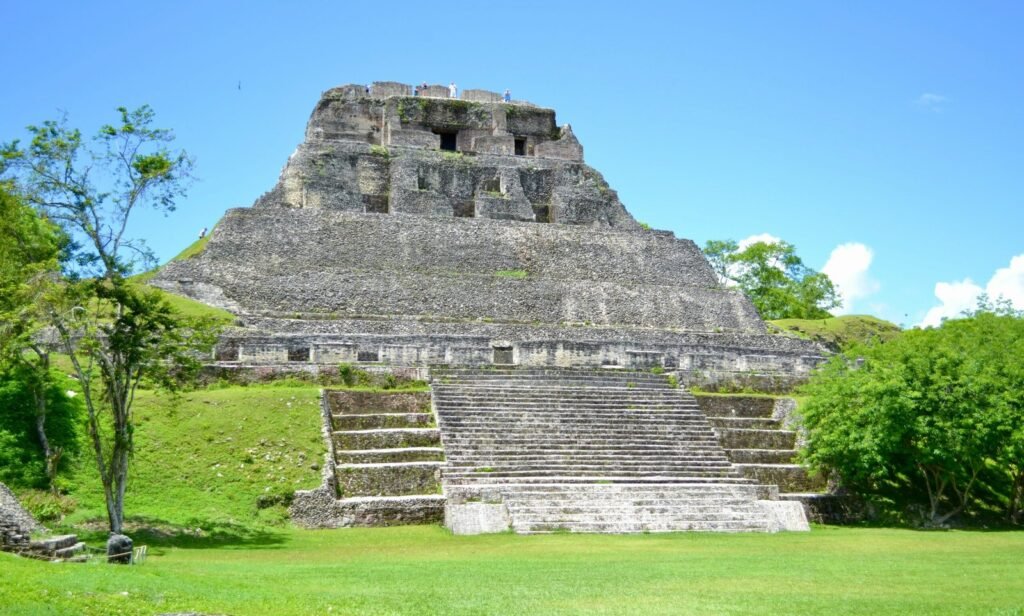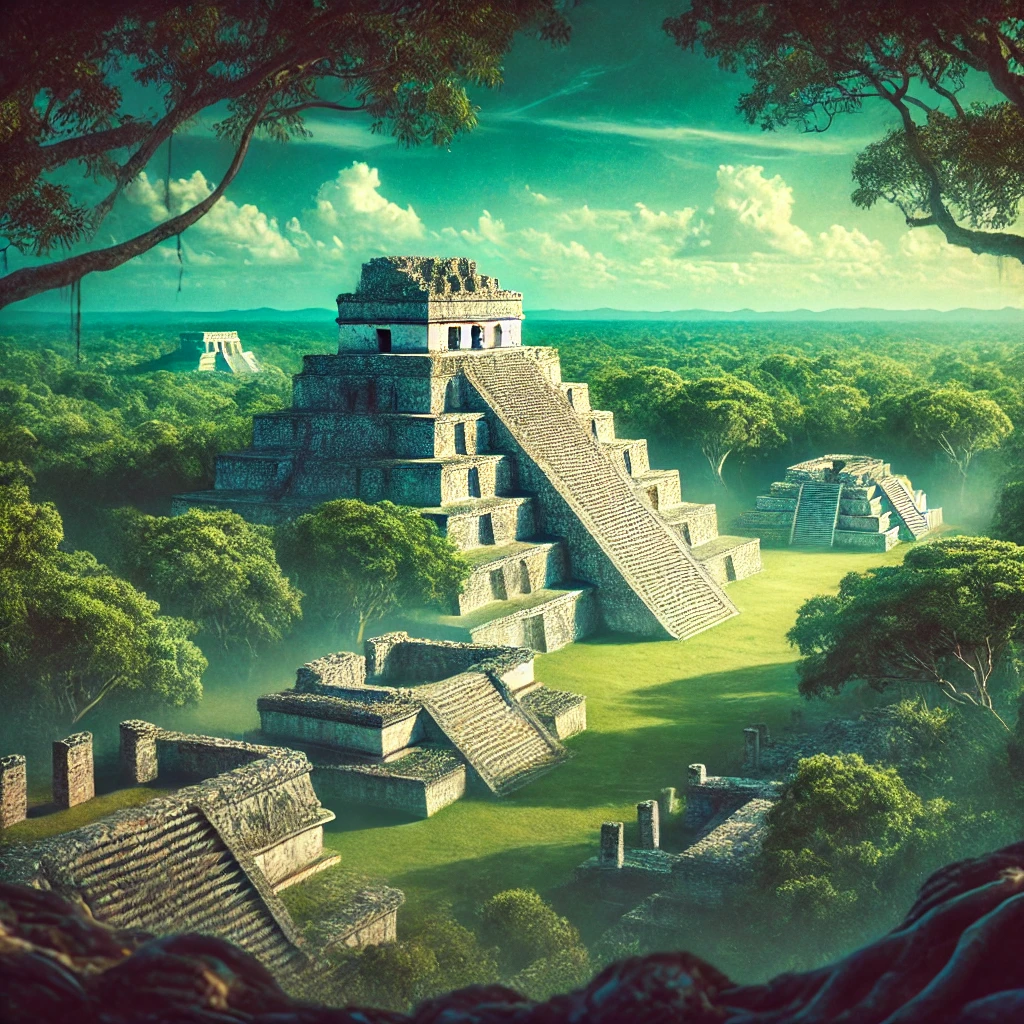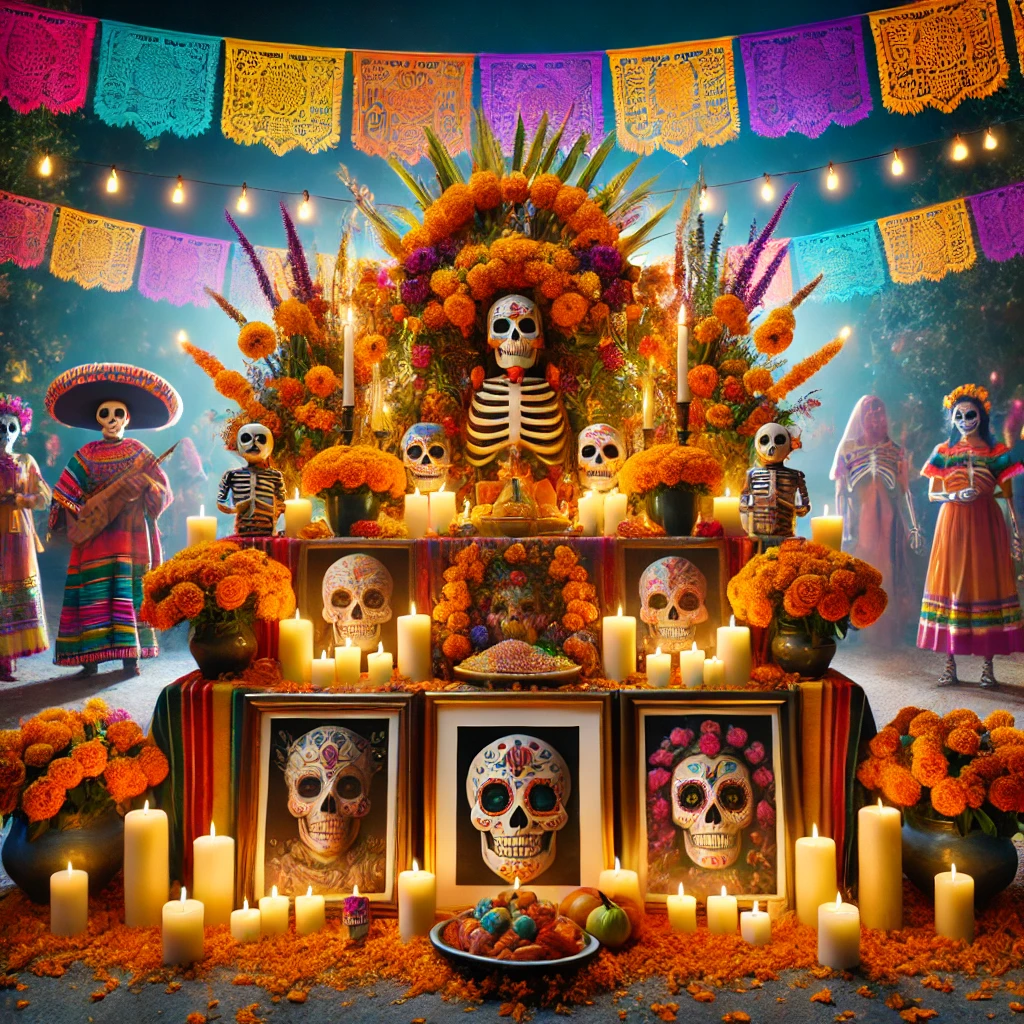Table of Contents
Introduction to the Mayan Civilization
The Mayan civilization is one of the most fascinating cultures in ancient history, known for its remarkable contributions to architecture, mathematics, and astronomy. Emerging around 2000 BCE in what is now southern Mexico, Guatemala, Belize, and parts of Honduras and El Salvador, this civilization flourished for over three millennia, reaching its peak during the Classic period (approximately 250 to 900 CE). The origins of the Mayans can be traced back to earlier Olmec societies, yet it was the Mayans who developed a complex social structure, innovative agricultural techniques, and sophisticated urban centers.

Geographically, the Mayan civilization spanned a diverse landscape, including coastal plains, highlands, and rainforests. This varied environment influenced their lifestyle and economic practices, leading to the establishment of trade networks that facilitated the exchange of goods such as cacao, textiles, and pottery. The Mayans were primarily agrarian, relying on the cultivation of maize, beans, and squash—a trio known as the Mesoamerican triad—which formed the backbone of their diet and economy.
Culturally, the Mayans were known for their profound knowledge in various fields, including mathematics and astronomy. They developed a complex numerical system and created a highly accurate calendar that demonstrated their advanced understanding of celestial movements. Architecturally, the Mayan civilization is renowned for its construction of monumental structures, such as temples, palaces, and pyramids. Cities like Tikal, Palenque, and Chichen Itza feature remarkable stone carvings and inscriptions that narrate their history, mythology, and achievements.
The vast timeline of the Mayan civilization reflects not only their innovative spirit but also the resilience and adaptability of their society. Despite the eventual decline of their cities during the Postclassic period, the legacy of the Mayans endures, significantly influencing contemporary culture and tourism in Mexico and Central America.
Significance of the Mayan Ruins
The Mayan ruins of Mexico stand as monumental testaments to the ingenuity and complexity of the ancient Mayan civilization. These structures are not only aesthetically striking but also culturally and historically significant, offering invaluable insights into the society that constructed them. The ruins serve as remnants of a civilization that thrived from approximately 250 to 900 AD, showcasing their advanced understanding of various disciplines including astronomy, mathematics, and agriculture. Understanding these ruins is pivotal in painting a holistic picture of Mayan society and its contributions to human history.
Primarily, the Mayan ruins functioned as central hubs for religious and political activities. Temples and pyramids were often constructed in alignment with celestial events, reflecting the Mayans’ deep connection to the cosmos and their reliance on astronomical observations for agricultural cycles. This relationship not only highlights the significance of these structures but also demonstrates the Mayans’ advanced scientific knowledge at the time. Moreover, these ruins served as political centers, where leaders conducted ceremonies and made vital decisions affecting their communities, thereby reinforcing the social hierarchy present in Mayan culture.
The architectural innovation evident in the ruins is another testament to the sophistication of the Mayan civilization. They employed advanced techniques in construction, as seen in the intricate carvings, complex platforms, and expansive plazas. Agriculture also played a critical role in their society, and the ruins often reflect agricultural advancements, such as terracing and irrigation systems designed to maximize crop yields. The significance of the Mayan ruins extends beyond their physical presence, as they provide a crucial gateway to understanding the intricate social, political, and economic systems that characterized the period. Exploring these ancient sites enriches our comprehension of humanity’s past and underscores the remarkable achievements of the Mayan civilization.
Top Mayan Ruins to Visit in Mexico
The rich heritage of the Mayan civilization can be witnessed at several remarkable archaeological sites scattered throughout Mexico. Each location offers a unique glimpse into the past, showcasing the architectural prowess and cultural significance of this ancient society. Among these, Chichen Itza, Tulum, and Palenque stand out as iconic destinations that attract travelers from around the globe.
Chichen Itza, perhaps the most famous of the Mayan ruins, is a UNESCO World Heritage Site located in the Yucatan Peninsula. The site features the Pyramid of Kukulcan, a stunning structure that reflects advanced astronomical knowledge. The pyramid’s design incorporates intricate carvings and its alignment with the sun results in a captivating shadow play on equinoxes. Visitors can explore numerous other structures, including the Great Ball Court and the Temple of the Warriors, each bearing testament to the Mayans’ architectural and societal achievements.
In contrast, Tulum offers a breathtaking coastal experience, perched on cliffs overlooking the Caribbean Sea. Known as the only Mayan ruin built along the ocean, Tulum served as a significant port city. This site’s well-preserved walls encircle several key buildings, including the Temple of the Frescoes, adorned with murals that convey the spiritual life of the Mayans. Tulum’s easy access to pristine beaches combined with its historical allure makes it a favorite among eco-tourists and history buffs alike.
Headed south in Chiapas, the ruins of Palenque showcase a different but equally compelling narrative of the Maya civilization. Nestled within a lush jungle, Palenque is known for its elaborate architectural designs and carving details. Key structures include the Temple of the Inscriptions, which houses the tomb of the ancient ruler Pakal the Great. This site captivates visitors with its intricate stonework and rich history, offering insights into the complex society that once thrived there.
Getting There: Travel Tips and Logistics
Visiting the Mayan ruins is a memorable experience that requires careful planning to ensure a smooth journey. The best time to visit these ancient sites is during the dry season, which typically runs from November to April. This period offers pleasant weather and allows for more comfortable exploration of the ruins, as well as reduced rainfall. However, it is essential to book accommodations in advance, particularly during peak tourist months, to secure ideal lodging options.
When it comes to transportation, several options are available for reaching the Mayan ruins. Major cities such as Cancun, Playa del Carmen, and Tulum act as gateways to these historical sites, and both bus services and car rentals are convenient choices for travel. Many visitors opt for guided tours, offering the advantage of expert knowledge and a well-planned itinerary. Ensure to check schedules and routes ahead of time, especially if you plan to traverse between multiple sites within a single day.
Accommodation around the Mayan ruins varies significantly, catering to various budgets from luxury hotels to budget hostels. Popular areas like Tulum offer eco-friendly options, while towns such as Valladolid provide charming boutique hotels. That said, choosing a location close to the ruins not only reduces travel time but also allows for an immersive experience in the region’s vibrant culture.
Practical considerations extend beyond logistics; safety tips should also be a priority. It is advisable to stay aware of your surroundings, avoid displaying valuables, and prefer well-lit areas at night. Additionally, certain sites may require permits or entry fees, so research in advance helps to prevent any unexpected delays. Familiarizing yourself with local customs, such as respectful dress codes and customs while visiting sacred sites, can enhance your experience further. Overall, thoughtful preparation enhances the journey through Mexico’s ancient history.
What to Expect: The Visitor Experience
Visiting the Mayan ruins offers an immersive experience that transports individuals into the heart of one of the most captivating civilizations in history. Upon arrival, visitors can anticipate a well-organized experience that begins at the designated visitor centers, which provide essential resources for those eager to learn about the ancient culture. Here, informative displays outlining the history, architecture, and significance of the ruins are readily available, serving as an excellent primer before exploring the sites.
Guided tours are a popular option for those wishing to deepen their understanding of the Mayan civilization. Knowledgeable guides, often fluent in multiple languages, will share insights that may not be found in traditional guidebooks, illustrating how these ancient structures relate to contemporary cultures. Additionally, these tours can enhance the experience by providing a chronological context, highlighting architectural features, and emphasizing the achievements of the Mayans in areas such as astronomy and agriculture.
In addition to educational opportunities, many sites are equipped with amenities designed to enhance visitor comfort. Well-maintained pathways allow for safe exploration, while shaded areas provide respite from the sun. Visitors can also find restrooms, snack stands, and marketplaces offering local crafts and souvenirs, ensuring that your journey is both enjoyable and convenient.
Respecting the cultural heritage of the Mayan ruins is paramount during your visit. It is essential for all guests to adhere to guidelines that protect the integrity of these ancient sites, such as staying on marked paths and avoiding any contact with the structures whenever possible. By doing so, visitors not only enjoy a memorable experience but also contribute to the preservation of these treasures for future generations.
The Role of Preservation and Conservation
The preservation and conservation of the Mayan ruins are crucial for maintaining these ancient structures that serve as a window into the rich history of the Mayan civilization. Various factors, including rampant tourism, environmental degradation, and natural disasters, pose significant threats to these archaeological treasures. In response to these challenges, numerous organizations and initiatives have emerged, focusing on safeguarding these sites for future generations.
In recent years, collaboration among governmental bodies, non-profit organizations, and local communities has intensified to ensure effective management of the Mayan ruins. The Mexican government has developed programs aimed at integrating conservation practices with tourism management. Such initiatives seek to mitigate the impact of visitors while ensuring that these historic locations remain accessible. Sustainable tourism practices are pivotal, as they prioritize the preservation of the ruins while offering visitors an enriching cultural experience.
Organizations like the National Institute of Anthropology and History (INAH) and international bodies such as UNESCO play vital roles in preserving the integrity of these ancient sites. INAH conducts regular assessments and restoration projects aimed at structural stability and public safety without compromising historical authenticity. Additionally, UNESCO’s World Heritage designation helps raise awareness and provides necessary funding for conservation work, ensuring that the Mayan ruins continue to hold their significance in the world’s cultural heritage.
Moreover, community involvement is key to successful conservation efforts. Local populations often possess invaluable knowledge about the significance and history of these sites. By engaging communities in preservation initiatives and sustainable tourism practices, stakeholders can promote a sense of ownership and responsibility towards protecting these ancient remnants. Collectively, these efforts reflect an understanding that preserving the Mayan ruins is not merely about maintaining physical structures but rather about preserving a vital part of human history for generations to come.
Cultural Insights: Engaging with Local Communities
Visiting the Mayan ruins offers an unparalleled opportunity to connect with the rich cultural tapestry of the region. Engaging with local communities is pivotal not merely for an enhanced travel experience but also for fostering sustainable tourism that respects the heritage of modern-day Mayan descendants. These communities have preserved many customs that provide insights into the ancient civilization, while also adapting to contemporary influences.
The Mayan people today speak various languages, with Yucatec Maya being one of the most prominent in regions such as the Yucatán Peninsula. Understanding a few basic phrases can significantly enrich interactions with locals. For instance, a simple greeting such as “Ba’ax ka wa’alik?” meaning “How are you?” can open doors to friendships and deeper cultural exchange. Visitors should also be aware of the significance of traditional greetings, which often include handshakes or acknowledging elders first.
Mayan communities celebrate numerous festivals throughout the year, many of which are rooted in agriculture and spirituality. Participating in these events provides visitors with firsthand experiences of authentic rituals, music, and dance. Local artisans often showcase their craftsmanship during these events, and engaging with them can enable travelers to appreciate the intricacies of Mayan art and trade. Respectfully inquiring about their work and traditions demonstrates a genuine interest and fosters a sense of mutual respect.
Moreover, visitors can contribute positively by supporting local businesses, such as cafes, markets, and artisan workshops. This not only aids in the economic sustainability of these communities but also creates opportunities for dialogue and cultural exchange. Understanding the importance of cultural sensitivity and being open to learning from the local customs will ultimately enhance the travel experience, bridging the past and present of the Mayan heritage in a meaningful way.
Mayan Myths and Legends: The Stories Behind the Ruins
The Mayan civilization is renowned not only for its architectural marvels but also for the rich tapestry of myths and legends interwoven with these ancient ruins. These narratives often serve to explain the origins of significant sites, the lives of the gods, and the fundamental beliefs that shaped the Mayan worldview. At the core of Mayan mythology is the belief in a pantheon of deities, each associated with various aspects of nature, agriculture, and cosmic phenomena. For instance, it is said that the god Itzamná created the world, shaping the landscape and bringing forth life, a story echoed in the physical presence of the majestic ruins that now dot the Mexican landscape.
One prevalent legend involves the creation of the city of Tikal, an archaeological marvel in the heart of Guatemala. According to Mayan lore, the famed hero twins, Hunahpú and Xbalanqué, defeated the lords of the underworld, Xibalba, demonstrating the triumph of light over darkness. This legend is reflected in the ornate carvings found at Tikal, showcasing the deep connection between the mythological stories and the monumental structures. Such tales not only highlight the Mayans’ intricate understanding of their environment but also the spiritual significances attached to their achievements.
Moreover, the interplay between these legends and the physical monuments serves to enhance their significance. The ruins are not merely remnants of the past; they are a living narrative of the Mayan people, encapsulating their beliefs, struggles, and aspirations. Each stone and structure embodies stories that have transcended generations, illustrating the importance of these sites in preserving Mayan culture. As we explore these ancient ruins today, it becomes essential to appreciate the myths and legends that enrich our understanding of the Mayan civilization’s profound legacy.
Conclusion: The Enduring Legacy of the Maya
The Mayan civilization, known for its impressive architectural achievements and sophisticated understanding of astronomy, continues to leave a profound impact on contemporary culture and history. The ruins that dot the landscapes of Mexico, Belize, Guatemala, and Honduras are not merely remnants of a bygone era; they serve as a vital link to the past. Each temple, pyramid, and intricate carving tells a story that reflects the ingenuity and resilience of the Maya. The enduring legacy of the Maya is not confined to their historical significance; it is intricately woven into the fabric of modern societies, influencing art, architecture, and philosophies.
As we engage in continual exploration and research of these ancient ruins, we gain insight into the complexities of the Mayan civilization. Scholars and archaeologists tirelessly work to uncover the mysteries of their social structure, religious practices, and technological advancements. This ongoing investigation is essential, as it not only enhances our understanding of the Maya but also highlights the necessity of preserving these historical sites for future generations. The ruins offer an invaluable perspective into a culture that was deeply connected to its environment and that made significant strides in various fields long before modern advancements took center stage.

Visiting these remarkable sites allows individuals to forge a personal connection with history. Each visit encourages a deeper appreciation for the Maya’s contributions, emphasizing the importance of cultural heritage in our global narrative. Travelers interested in history are encouraged to immerse themselves in this unique experience, embracing the opportunity to learn about the civilization that thrived in Mesoamerica for centuries. In doing so, we honor the Maya and continue the conversation about their significance, ensuring that their influence is remembered and respected in the modern world.





